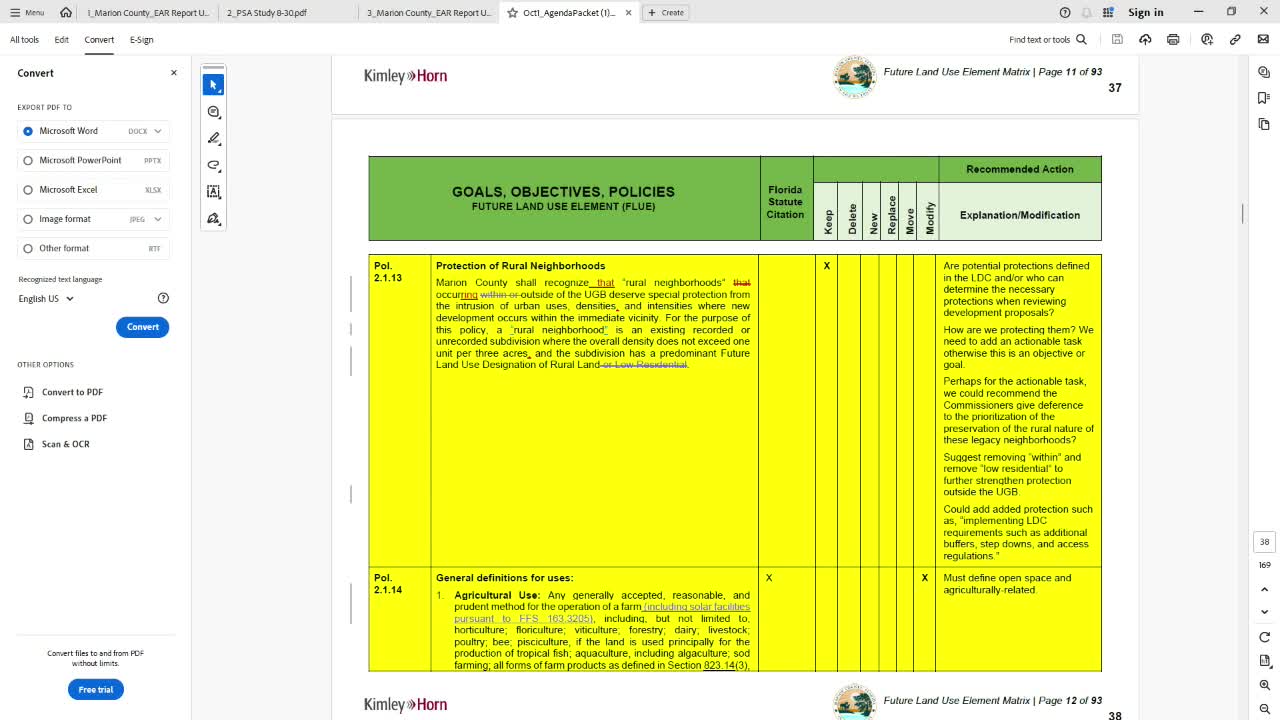Commissioners debate urgent protections for rural neighborhoods
October 01, 2024 | Marion County, Florida
This article was created by AI summarizing key points discussed. AI makes mistakes, so for full details and context, please refer to the video of the full meeting. Please report any errors so we can fix them. Report an error »

During a recent government meeting, officials discussed the critical issue of protecting rural neighborhoods in light of citizen feedback regarding urban growth boundaries. The conversation centered on Policy 2.1.13, which aims to safeguard these neighborhoods from urban encroachment.
Commissioners acknowledged concerns raised by residents during workshops, emphasizing the need to maintain growth within established urban boundaries. The initial recommendation to exclude rural neighborhoods from the urban growth boundary was met with pushback, prompting a reevaluation of how to effectively protect these areas.
Several board members proposed that the policy should explicitly recognize rural neighborhoods both within and outside the urban growth boundary. They suggested that the current language could be revised to clarify protections against urban development, particularly in areas where rural neighborhoods exist adjacent to urban zones. This includes potential measures such as increased buffering and step-down zoning regulations to mitigate the impact of urban density on rural communities.
The discussion highlighted the complexity of defining rural neighborhoods, with suggestions to differentiate protections based on location—specifically, proposing different criteria for neighborhoods within the urban growth boundary compared to those outside it. The board agreed on the necessity of further refining the policy to ensure that it adequately addresses the unique needs of rural neighborhoods while accommodating urban development.
As the meeting concluded, officials committed to revisiting the policy language to incorporate these insights, aiming to strike a balance between growth and preservation of rural character in the region.
Commissioners acknowledged concerns raised by residents during workshops, emphasizing the need to maintain growth within established urban boundaries. The initial recommendation to exclude rural neighborhoods from the urban growth boundary was met with pushback, prompting a reevaluation of how to effectively protect these areas.
Several board members proposed that the policy should explicitly recognize rural neighborhoods both within and outside the urban growth boundary. They suggested that the current language could be revised to clarify protections against urban development, particularly in areas where rural neighborhoods exist adjacent to urban zones. This includes potential measures such as increased buffering and step-down zoning regulations to mitigate the impact of urban density on rural communities.
The discussion highlighted the complexity of defining rural neighborhoods, with suggestions to differentiate protections based on location—specifically, proposing different criteria for neighborhoods within the urban growth boundary compared to those outside it. The board agreed on the necessity of further refining the policy to ensure that it adequately addresses the unique needs of rural neighborhoods while accommodating urban development.
As the meeting concluded, officials committed to revisiting the policy language to incorporate these insights, aiming to strike a balance between growth and preservation of rural character in the region.
View full meeting
This article is based on a recent meeting—watch the full video and explore the complete transcript for deeper insights into the discussion.
View full meeting